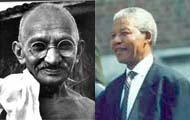In conversations with leaders and those who select them the topic of the Myers-Briggs type indicator (MBTI) occasionally arises. While the Myers-Briggs type may not be the best assessment of personality it is certainly the most well known.
Let’s start with a quick review. A Myers-Briggs type contains four letters. For example, I usually score as an ENFP. The first letter is how you gather energy. Extroverts (E) are energized in groups and during interactions with other people. Introverts (I) are more energized in quiet moments. The second letter can be thought of as the way you gather information. Intuitive (N) leaning individuals look for patterns in the past while sensing (S) individuals look around in the present moment. You can think of the third letter as an indication of how you make decisions. Thinking (T) individuals use logic and reason to make decisions. Feeling (F) people look for what will best create harmony. Finally, the last letter is how an individual closes issues. Judging (J) individuals like to close things down, to converge on solutions or decisions, wrap them up with a bow, and move on to the next project. Perceiving (P) individuals like to leave things open because they may want to incorporate new data as it become available.
I frequently hear upper level managers say something to the effect of, “I think I want Sally to lead that team because she’s good at getting projects done. She gets groups to converge to a solution rather quickly.” When I hear this my first question is to inquire as to the nature of the new group’s task. If the task is one which requires a lot of discovery and inquiry, then Sally is probably not a good fit. From the manager’s first statement it is clear that Sally has a tendency toward judging and closing things down. The judging factor is indeed what you need when closing a project down, but it’s not what you want for a group whose mission is to explore and discover.
An important point to remember is that the Myers-Briggs type indicates a preference. It is not a fixed type of personality. If you look at the questions you will see that you are forced to choose between one of the responses.
As a leader, I don’t always care where a person scores, that is, what their preference is. I care greatly, however, whether or not they can easily shift from one mode to another. For example, a leader may be in a position which requires much analysis with numbers and technical issues. For this the thinking orientation will serve well to help make good and quick decisions. However, when personnel issues arise we need this leader to be able to shift quickly, to adapt to a feeling perspective.
The Myers-Briggs type is an excellent model to describe behaviors, and is one I frequently use with my clients. As with all tools, use it wisely and within its limitations.
Concepts:
- The Myers-Briggs type indicates an individual’s preference
- How well a leader can adapt to the issue in the present moment is more important than their preferred mode
- The Myers-Briggs type is a good model that highlights many important elements of leadership
Keywords: leadership, Myers-Briggs, MBTI, extrovert, introvert, sensing, intuitive, thinking, feeling, judging, perceiving, adaptability
References:
- Furnham, A. (1996). The big five versus the big four: The relationship between the Myers-Briggs Type Indicator (MBTI) and NEO-PI five factor model of personality. Personality and Individual Differences, 21(2), 303-307.
- Furnham, A., Dissou, G., Sloan, P., & Chamorro-Premuzic, T. (2007). Personality and intelligence in business people: A study of two personality and two intelligence measures. Journal of Business and Psychology, 22(1), 99-109.
- Furnham, A., Moutafi, J., & Crump, J. (2003). The relationship between the revised NEO-Personality Inventory and the Myers-Briggs Type Indicator. Social Behavior and Personality, 31(6), 577-584.
- Myers, I. B., McCaulley, M. H., Quenk, N. L., & Hammer, A. L. (2003). MBTI manual: A guide to the development and use of the Myers-Briggs type indicator (3rd ed.). Mountain View, Calif.: CPP.



